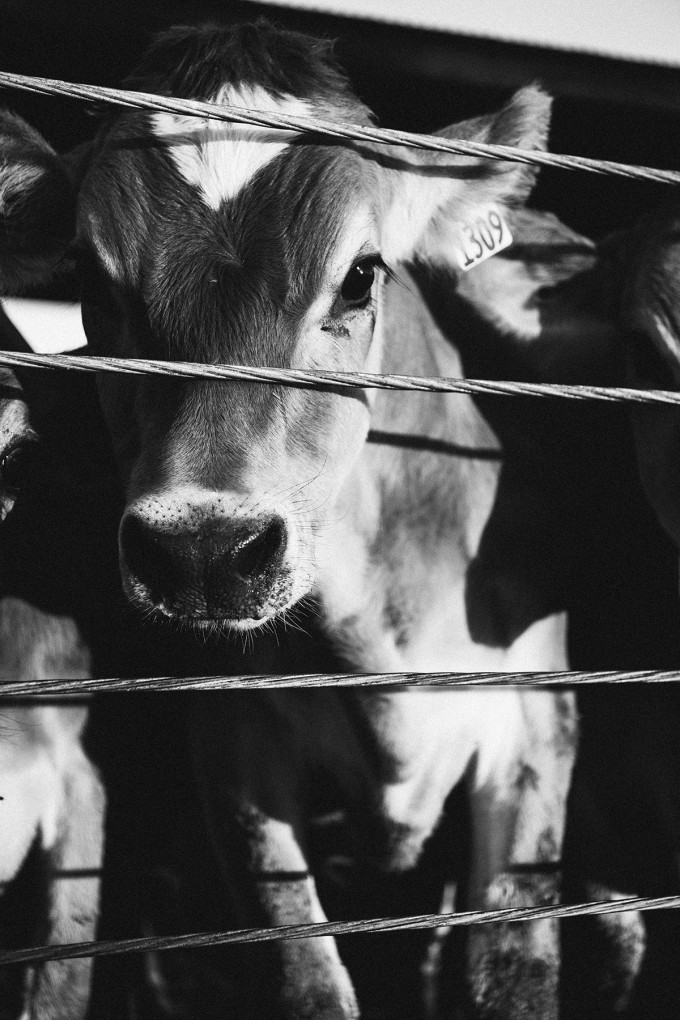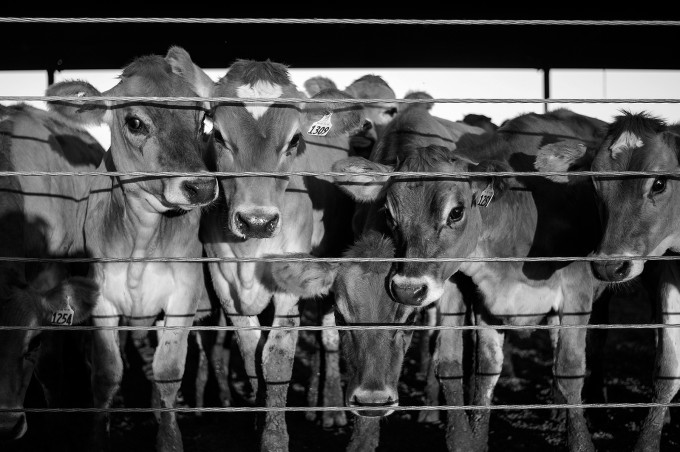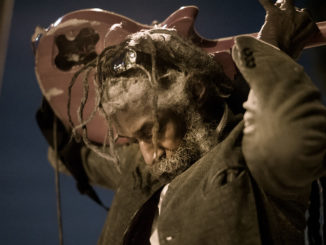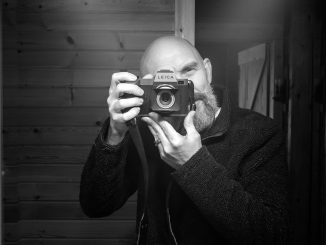Which is Which? Leica Monochrome vs Sony A6000
UPDATE: #1 is the A6000 and #2 is the Monochrome! You guys got it right, (most of you)!
Have not done one of these in a while and I always get asked to do these crazy comparisons so here we go. Which is which?
ONE image was taken with a Sony A6000 and one with a Leica Monochrome. Not going to say what lenses were used with each but let’s do a fun poll to see who can guess it right.
So seeing that the Leica is an $8000 camera vs the Sony at $648 pick which one you feel is from the Leica. EXIF has been stripped.
IMAGE 1
–
IMAGE 2
If you are unsure which is from which camera, then just take your best guess. 🙂
UPDATE: Sony is #1 and Leica is #2!
[polldaddy poll=8388796]







When you made the shot with the Sony a6000 did u utilize
B&W Creative Style? If so, please delineate which mode u set the camera in, also, contrast and sharpness settings?
Was there any post work done on the shot, if so please explain further.
Thanks
Since this was from 2012, or ten years ago, I have no idea. I do not remember.
Good game. 🙂
for me the noise in nr1 is leica.
just my humble opinion
was this really supposed to be a quiz??? Srsly????
Look at the range i #1 vs. #2 of cow 1309. the capture of detail even with the mag factor in #1
It did not take a second, or a second look. I actually expected it to be closer. This is a walk-over
Yuk on the a6000
OK, I get it. You did this to trick us, Right? I mean you just went slider crazy in post on #1… I get it. Why would you impugn a nice company like Sony this way?
Image 1 was posted in the 50mm Zeiss Touit review…
an interesting post… Steve thanks for sharing… what lens did you ?
Fun to see how far DX has come. But the main problem in DX remains to me the look not only in the shadows, but, more important, in the middle tones. It always looks a little as if shooting through distorted glass or small waves (sorry, don´t know the right term).
In bigger Prints i expect the Monochrom to be visible better not only in the shadows but also in the wide tonal range. That made the BW-Photos special in the past and that is what gives us the Monochrom with the possibility of shooting at 10.000 ISO.
That doesn´t make the Sony a bad camera, for sure not, but there is a difference. If anyone likes BW i suggest to start with a (used) M8 like i did. The price-difference is not that big and the M8-BWs can give you a taste of the monochrome, i think.
Too late, I see the answers already. But if #2 was not the Leica, Leica has a problem.
My main problem with digital mono of any kind is the lack of tonal gradation and differentiation of mid range tones. I have seen very few outputs that overcome that, and apparently then only after hard work.
Until digital can really overcome that- and it doesn’t really seem the Leica does right out of the box- it’s an unachieved goal.
Hello Ronin,
one of the Problems the early Monochrome Users had to deal with was the overwhelming range of tonal gradation of the Files. It took a steep learning curve (as i´ve seen with Photographers, pity i don´t own one myself) to find the right workflow in post-processing. At the beginning there where too many grayish pictures made with the MMonochrome.
I think with the Monochrome you should have more than enough mid-tones to work with.
Of course, in that field a film has a stronghold, but with that Leica digital has mastered the tonal-rang by an impressive margin.
Of course in my humble opinion.
This seems to lend to the argument that which camera body you use is largely inconsequential from an IQ standpoint. There may be (and probably is) in this case a substantial difference in *how* you use these cameras, but hardly anyone would notice the image difference or care.
I’ve tried to stop worrying about whether a new, camera body would be “better” than what I have and think more about if the way it works would prompt me or make it easier to make more and better photos.
Lenses make such a larger impact on how my pictures look.
Kind of ridiculous.
Shoot the same image. Same framing, perspective, distance. Then, show the results, with the same processing or without processing. It’s too easy to ‘trick’ people this way. Not sure, actually, why the objective IS to trick us. Why not make a real comparison?
not great pictures to compare with. They should be the same subject at least, however clearly #2 has much better mid-tones and is therefore probably the Leica
I remember more that 20 years ago a “test” in a magazine. They usually did vacuum cleaners, toasters and washing machines, but occasionally photo gear, too. A Leica R-E with 28-70 received poor ratings against Japanese SLRs with 50/1.7 prime lenses (vignetting, resolution, distortion etc.). What a surprise.
On the first, the close-up image nothing is in focus except the steel cables. The second image is made from greater distance or with a wider lens, as such is more forgiving at first sight. Putting landscape and portrait shots side-by-side is another challenge. At first, the portrait shot is placed (with higher magnification) above the landscape shot at identical width. When opening the images in separate windows the portrait shot is squeezed into the available window height, but overall the image still appears less crisp, i.e. with highlights out of focus.
So many different factors and parameters, apart from lens, sensor and image processing.
50/50 guesses are a waste of time….better still, take 4 images of exact scene, same exposure without telling what camera took what….let us pick the best image, then tell us the cameras.
Having a MM myself, I guessed photo no. 2 because of the myriad tones and subtleness of the shades. It’s not just the OOC image however – it’s the malleability of the files that astounds and puts very big smiles on my face whenever I shoot with it.
#2 is the Leica, much smoother, detailed and realistic… plus better range of tones… you can see the moisture on the noses…
Damn..but image #1 is so sharp, sharper than #2..What lens did you use?
#2 has the “full-frame look” ergo Leica
The only reason I guessed #2 is because of the richer blacks to whites, contrast, and to the naked eye I didn’t see any artifacts(assumption is the M has better noise performance).
Hah … so it’s that hard to see a “Leica Look” … 😀
Steve, this is your best series, by far. Love the crazy comparisons. Thanks for brining a new one and hope to see more!
A6000 all the way! wohoo!!! 🙂
I enjoy these comparisons; that said, I feel most Leica-affectionatos could care less about the results. Kind of like comparing lap-times around Road Atlanta between a Ferrari & a Corvette. My vote is Monochrome #2, better tonality, less noise; and I don’t own a Ferrari or a ‘Vette 🙂
hence both comparisons are meaningless. Which Ferrari and which Corvette makes a world of difference
most Leica lovers don’t care about results? about as accurate as your Ferrari/Vette comment.
If you guys would stop being so green with envy maybe you would notice things like range, contrast and sharpness. This is like a full-race Corvette vs. an older Ferrari… no contest… none.
This isn’t personal. Shoot what you like and have fun. Your comments are both personal and incorrect/uninformed
#1 is a much harsher image with its blown highlights and blocked low values. #2 has the greater dynamic range and much more “3D pop”. It’s not even close–#2 is the MM.
Your guess came after the answer was posted (an hour ago) 🙂
Number 1 on the basis of the whiteness of the diamond on the cows head?
Without doubt, not enough difference that anyone should care.
it depends, but it’s quite clear as well.
Pic 1: Black and White
Pic 2: Black and White and GREY
Well ? Which is which ? Enough of the suspense already.
Number one the darkened of the blacks
I own monochrome, and i give up to chose either one, too difficult to check without big mac monitor.
By over $7,000 it matters.
Only if you don’t have $7,000 laying around. If you do, the 10-15% improvement is worth the money, or to put it another way, if it’s only the Leica image that you want, then what’s price have to do with it? Nothing else will do.
Not sure why my comment didn’t show up yet (hence trying again). I think #1 is the Monochrome with this almost classic film look/grain, #2 is the Sony: clean, noise free digital image.
So GAS guys show me you can recognize that ‘famous Leica look’…:). It seems once of a sudden a lot of people are ‘away’ to vote? All those wiseguys have a day-off hahahah…
The subtle difference of greys produced by the black white sensor clearly shows the advantage of a single purpose camera like the monochrome. BTW…I have idea which is which just practicing Leica-Speak.
I am saying #2 is monochrome. The blacks should be black, and in #1 they just look off – like a post-processing mistake. But like others said, it’s a really weird compare since one is close up and the other is at a distance. I think comparable shots would have made this much more clear.
I’am always suprised…….people have been reading SHP for years & they still don’t get it! It’s a CrAzY Comparison and it dosen’t matter if he plays with composition it’s meant to be FuN.
#2 is the Leica. Sharpness is greater there.
#2 is Monochrome because it is the smaller print; #1 is bigger so probably a 24mp image.
#1 monochrome, possibly with grain added in post
Odd the grain went! Must have been the device I was using at the time
I vote number 1 Mono because of the look of the out of focus areas, and the quick transition. It’s full frame, Sony is ASP-C. So you took the 2nd photo on the a6000 further away to negate that effect on the smaller sensor.
OR you did the exact opposite, for the same reasons.
🙂
first: A6000
second: Monochrome
The problem with this test is the images are not the same. Close-ups will always look sharper as more pixels are used per square millimetre of subject area. Even my very cheap Sirius f2.8/28 with a so-called macro facility produces superbly sharp images with my 5N of the watch movements in my watch collection. Bought on ebay for £6, say $9.
So, here, we are not seeing like for like to compare. Nevertheless, I’m opting for image #1 as being the Monochrom based on the sharpness of the hairs around the nose. If I’m wrong, it supports what I said above, especially, but also what many accept that in blind tests it is often nigh on impossible to really tell the difference between quality kit when viewing via a monitor. Price alone is not a good comparison.
You make a very good point Terry!
Steve, I really dig your tests and posts like this in general, but this one seems flawed as the images were totally different compositions and show different post processing styles. If you had tried to shoot and process them to look the same, then that’d be really interesting and certainly more fun to guess!
Yes Terry, the hairs around the nose (and sometimes in the nose) are always the giveaway…
I think Photograph 2 is the Sony a6000. I find my a6000 has massive dynamic range and I think it’s possible to get this kind of image.
Actually, I think they’re both very pretty 🙂
Nice work Steve! LOL!!
Sony is great handling noise, delivering very clean, digital images. So I think pic 2 is the Sony. Leica on the other hand is trying to create this characteristic analogue/film look, hence I guess pic 1 the Monochrome.
based on the shadow of the photographer, it seems #2 is sony….but…..
I voted #2 as well… I’m dying to know since I own the a6000 myself 🙂
for me the #1 Leica MM with Elmar 50/3.5
Leica Monochrome: Image 2
I agree with you Eric!
Picture two should be from The monochrom. Much more dynamic range (to my eyes). If im wrong ill eat one of these cows
2 is monochrome?…more grey
2 is monochrome?….more grey
50/50 chance of getting it right so I’m game. Not familiar with MM images but I’m guessing it’s number 1. Has that grainy B&W film look. Number 2 reminds me a lot of the creamy look from my RX1r so I’m guessing it’s the Sony. If that’s the case, then I’m impressed with the A6000.
2 is the better image… What camera took it is irrelevant.
to me the bottom line is… it really doesn’t matter. If the photographer has a good/great eye, that is all that really matters. Great gear is great gear.
I’d guess #1 is Monochrom. Hard to tell with the size and processing, but falloff on #2 seems to deep and Steve like to shoot wide-open, yes?
The a6000 is a very good camera, but The leica blows it away anytime ! fun to play though 🙂
Unless you’re messing with us by changing the post-processing, the second image has the tonal range of the Monochrom. The first image might have just as well been Tri-X film.
Tri-X has pretty good tonal range. Rule of thumb: the slower the film speed (B&W) the finer the resolution, but also the contrastier. With Tri-X you get grain, speed, and tonal range.
When do we know the correct answer? Guessed 2.
The noise and character in image one seems to be the Monochrom. It looks a lot like my M8 when shooting around 160-320 iso converted to black and white. Image two seems too clean and smooth to be shot with a CCD, to my eyes at least.
don’t know which one is the Leica but no. 1 has excellent IQ
BR
Heiner
Your shadow (with sunnies on your head) in #2 looks like an un-leica sized lens…
Image #1 = a6000
Why didn’t you take photographs of the same object. One seems to have “objects.” Not sure what the point of this comparison is. All you need these days is a camera with a good sensor above 16-18 MP and a good lens. If cost is the issue, there are many alternatives out there that would do the trick. If you have the money, then I’d strongly recommend trying the MM; you will be pleasantly surprised.
Making a beeline for the nearest Sony store to buy me an a6000… 😉
I voted for #2 being from the Monochrom just because you weren’t as close, and RF cameras are harder to use for close-ups.
PS — You should have use a Mooooooonochrom…
Hard to compare because the distance is so different. At screen resolution I liked the top picture better, but zoomed in, I prefer the lower picture.
I assume the image quality is the advantage of the Leica, because you are giving up a lot to get it. Besides the money, I occasionally want to shoot in color.
Image 1 has so much noise in the shadows. If this had indeed been taken with the Monochrom, then the post-processing has messed up that file on purpose.
Let me guess, image no.1 is Leica, simply because it looks more like BW film and richer tone, while the presence of AA filter visible here on image no.2 which is A 6000